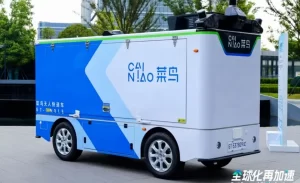Recently, Husqvarna, a global leader in smart lawn-mowing robots, announced the launch of four new high-performance robotic lawnmowers designed specifically for commercial use. While the commercial sector is growing, the household market—considered the main “battlefield” for lawn-mowing robots—is also expanding rapidly.
According to the Low-Speed Autonomous Driving Industry Research Institute, in recent years, as technology has advanced and living standards have improved, robotic lawnmowers, as an important part of smart home ecosystems, have gradually entered the public eye. Their automation and intelligence enhance efficiency and reduce labor costs, making them a popular choice for modern households and commercial spaces, especially in economically developed regions like Europe and the United States.
The “Smart” Wave in Lawn Mowing Robots
Currently, the primary market for lawn mowing robots is in Europe and North America. Statistics show that there are about 250 million private lawns and gardens globally, with 80 million in Europe and 100 million in the United States. All these lawns require regular maintenance and mowing. The lawn culture prevalent in developed Western countries has driven the growth of the outdoor power equipment (OPE) industry, with lawnmowers being the largest product category within it.
Compared to traditional walk-behind or ride-on mowers, intelligent lawn mowing robots are better suited for small, neatly manicured lawns, making them a popular choice in developed countries. Over the past few years, lawn care has been evolving toward smart robotic solutions.

Vast Growth Potential and Dominance in Europe and North America
According to research projections, the global OPE market will reach $32.4 billion by 2025, with lawnmowers accounting for about $12 billion of that. As robotic lawn mowers gradually replace traditional fuel-powered mowers, their market penetration in the home lawn care sector is expected to grow from 7% in 2015 to 17% by 2025. By 2026, the global robotic lawn mower market is projected to reach $3.5 billion.
The penetration rate of robotic lawnmowers is rising steadily, particularly in North America and Europe.
The demand for robotic lawnmowers is growing in North America, especially in the U.S. and Canada, where residential lawns are generally larger. A market analysis report by Segway-Ninebot in June indicated that the penetration rate of robotic lawn mowers in North America is currently less than 5%.
The penetration rate in Europe is relatively high (especially in Northern, Southern, and Western Europe), with countries like Germany and Switzerland having rates exceeding 40%. European households typically have smaller lawns, making robotic lawnmowers more suitable. Additionally, Europe’s focus on environmental policies and rising labor costs have driven the widespread adoption of robotic lawnmowers.
In the Asia-Pacific region, particularly China and Japan, demand has grown rapidly in recent years. Russia, Southern Europe, and the UK also show significant growth potential in the robotic lawn mower market.
Key Players in the Robotic Lawn Mower Market
At present, the major players in the robotic lawn mower market fall into three categories:
- Traditional garden tool companies such as Husqvarna, WORX, Robert Bosch, TORO, and MTD, which have a first-mover advantage in technology and market presence. These companies hold 90% of the global lawn mower market share.
- New entrants with a robotics background, such as Segway-Ninebot, Ecovacs Robotics, Dreame Technology, and AgileX Robotics.
- Emerging companies focused on smart robotic lawnmowers, such as Novabot, Yarbo Technology, HonyMow, and Airseekers.
Although these companies face competition from established players, the robotic lawn mower market is still in its early stages. Most companies are still in the trial phase, and no single brand has established absolute dominance, making the competitive environment relatively relaxed.

Product Strength is Key to Winning Customers
Without fierce competition or price wars, product strength remains the key to winning over users.
The combination of long-standing pain points in the overseas market, the feasibility of existing technology, controllable prices for core components, and the surge in consumer product exports offers Chinese robotic lawn mower companies a unique opportunity to “leapfrog” competitors.
Industry experts predict that 2024 will mark the beginning of a boundary-less era. The robotic lawn mower industry is transitioning from wire-guided/random navigation and collision-based models to boundary-less, planned navigation with VSLAM (Visual Simultaneous Localization and Mapping) obstacle avoidance. Since 2023, the number of wire-free robotic lawn mower SKUs (stock-keeping units) from Chinese brands has significantly increased, with notable improvements in core capabilities like navigation planning and obstacle avoidance technology.
Chinese robotic lawnmowers have already made waves overseas, and with vast market opportunities still untapped, more pioneers are likely to enter the field. Only companies that innovate technologically, address user pain points, maintain stable output, and build a solid reputation through excellent service will truly establish themselves in the global robotic lawn mower market.










